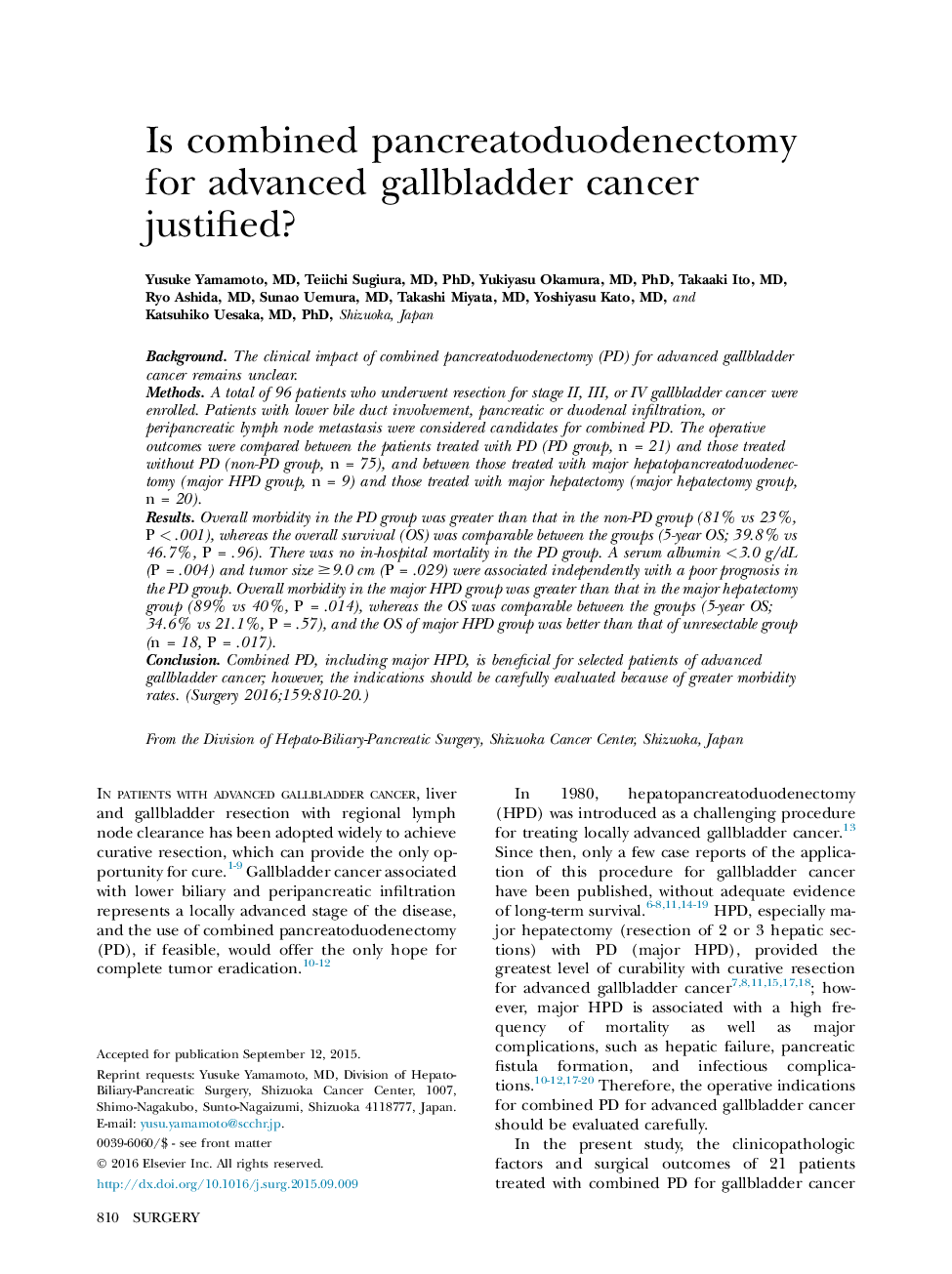| Article ID | Journal | Published Year | Pages | File Type |
|---|---|---|---|---|
| 4306812 | Surgery | 2016 | 11 Pages |
BackgroundThe clinical impact of combined pancreatoduodenectomy (PD) for advanced gallbladder cancer remains unclear.MethodsA total of 96 patients who underwent resection for stage II, III, or IV gallbladder cancer were enrolled. Patients with lower bile duct involvement, pancreatic or duodenal infiltration, or peripancreatic lymph node metastasis were considered candidates for combined PD. The operative outcomes were compared between the patients treated with PD (PD group, n = 21) and those treated without PD (non-PD group, n = 75), and between those treated with major hepatopancreatoduodenectomy (major HPD group, n = 9) and those treated with major hepatectomy (major hepatectomy group, n = 20).ResultsOverall morbidity in the PD group was greater than that in the non-PD group (81% vs 23%, P < .001), whereas the overall survival (OS) was comparable between the groups (5-year OS; 39.8% vs 46.7%, P = .96). There was no in-hospital mortality in the PD group. A serum albumin <3.0 g/dL (P = .004) and tumor size ≥9.0 cm (P = .029) were associated independently with a poor prognosis in the PD group. Overall morbidity in the major HPD group was greater than that in the major hepatectomy group (89% vs 40%, P = .014), whereas the OS was comparable between the groups (5-year OS; 34.6% vs 21.1%, P = .57), and the OS of major HPD group was better than that of unresectable group (n = 18, P = .017).ConclusionCombined PD, including major HPD, is beneficial for selected patients of advanced gallbladder cancer; however, the indications should be carefully evaluated because of greater morbidity rates.
